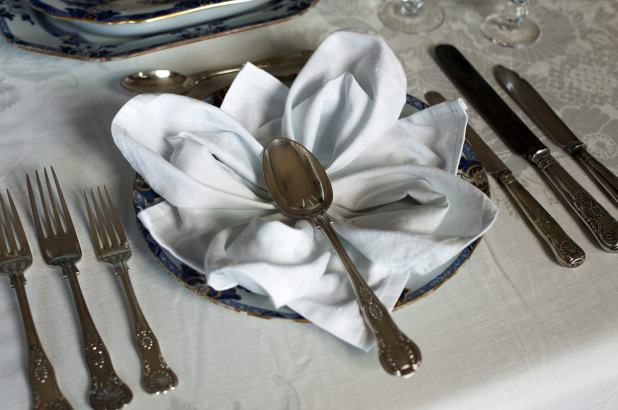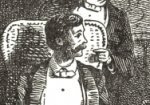For the Victorian diner the codified languages of flowers and fans were not the only way to carry on a discreet conversation. Introducing the discourse of dinnerware – the language of cutlery.
While it was not formalised till the mid 19th century, exactly when the ‘language of cutlery’ began is unknown. Like ‘flower language’ it may have its roots far back in history, with associations made to gestures or ritualized placement of objects. As with flowers, there are early appearances in literature. Jane Loudon wrote that “Shakespeare, that observer and chronicler of all things to do with man, has Hippolyta declare ‘by the standing of my spoon thou shal’t know my meaning‘”. The Elizabethan audience no doubt roared at the ribald double-entendre as Hippolyta [the Amazon queen and bride of Theseus in ‘A Midsummer Night’s Dream’] spears her spoon in the center of her strawberry posset far more than Loudon’s polite Victorian readers. [1]
Similarly, in Shakespeare’s jolly crowd-pleaser Timon of Athens, the Athenian Timon realises he has been abandoned by his friends when the dinnerware [specifically the silver plate] makes a none-too-subtle rearrangement:
And so intending other serious matters,
after distasteful looks, and these hard fractions,
with certain half Cold-Moving Nods they froze Me into silence,
laid their knifs in sullen rage and with their plate a wall of insolence made.Timon of Athens, Act II [2]
Cutlery provenanced to Governor Bourke by silversmith Matthew Boulton. Photo © Jenni Carter for Sydney Living Museums
Unlike the longer lived language of the fan or that of flowers, the ‘discourse of cutlery’ was really only a brief fad from the 1860s to the 80s. Like its fluttering and floral counterparts, it was also made all the more confusing because of the often-conflicting definitions: a yellow rose fopr example vicariously meant ‘jealousy’ or ‘unrequited passion’ which could lead to no end of awkwardness; similarly the definitions of tableware to be used routinely confuse knife sizes and types. I have to wonder how much cutlery was waved about in a choreographed dance that was lost on its uncomprehending, bewildered observer coming to terms with an eccentric dinner companion.
The Hobart and Launceston Examiner reported the ‘latest in genteel amusement’ to its readers in 1891 – by which time London Society hostesses had already decided the fad had run its course:
– The Discourse of Dining –
Conventionality imposes silence on women in many matters of grave importance, most of all on love-making, especially in its incipient stages. The rigours and customs of the table impose themselves as harshly upon Youth as upon their elders. How many old maids there must be who daily and hourly regret the sad fact that custom forbade their asking the young man who in their earlier days eyed them sheepishly from across the mahogany expanse “Do you love me?” What distress might have been averted if “I love you” could have been delicately conveyed to a young man only waiting for encouragement! For the diner the breadth of the cloth is as much as an ocean.
With the Argus-eyes of Society and Family upon them covert expression is both sought after and readily attained: For these the Languages of the bouquet and of the Fan are well known, and joining them is the “Discourse of Dining” as the Fashionable set have labelled it.
The language seems to have been designed for housewives as well as for maidens, for by the subtle manipulation of the apparatus of dining you may say, “We are watched”; “You have spilt the gravy”; “The conversation is tedious”; moreso diners may exchange opinions as a repast without offence being given to a hostess: “this meat is dry”; “this fish is old”; “the sauce is too oily”. The judgement is of the Olympians at the repast of Tantalus, arrived at without discourse; Woe be to the uninitiated who like Demeter then tastes the Pelopian dish!
To the writer however the fluttering of a fish knife may as well convey “my heart is beating for you” as it does a thwarted attempt to improve upon the task of the lazy cook who has not removed the bones, and we have no doubt the tables of the Fashionable will see much confusion as a result.Hobart and Launceston Examiner, 30 October, 1891
A practical lesson
School children learning Victorian “Table language” at Elizabeth Farm. Photo © James Horan for Sydney Living Museums
‘Table talk’ is part of the education programs at Elizabeth Farm where students learn the social complexities that underlay everyday customs such as dining. Below are a series of basic cutlery positions they explore, together with their meanings, using (blue) dinner and (multicolored) dessert ware. One of the basic concepts of the ‘language’ is the positioning of the knife to signify ‘cutting’ or ‘blocking’, it parallels and may actually have inspired the use of the word ‘cut’ in describing the severance of a social relationship. The position of the fork then signifies direction or response. The following are modeled from descriptions published in Practical instructions for ladies by Mrs Loudon. [1] We’ll start with the cutlery as presented ready on the table, with the soup spoon ready (the soup plate itself is then brought to the place):
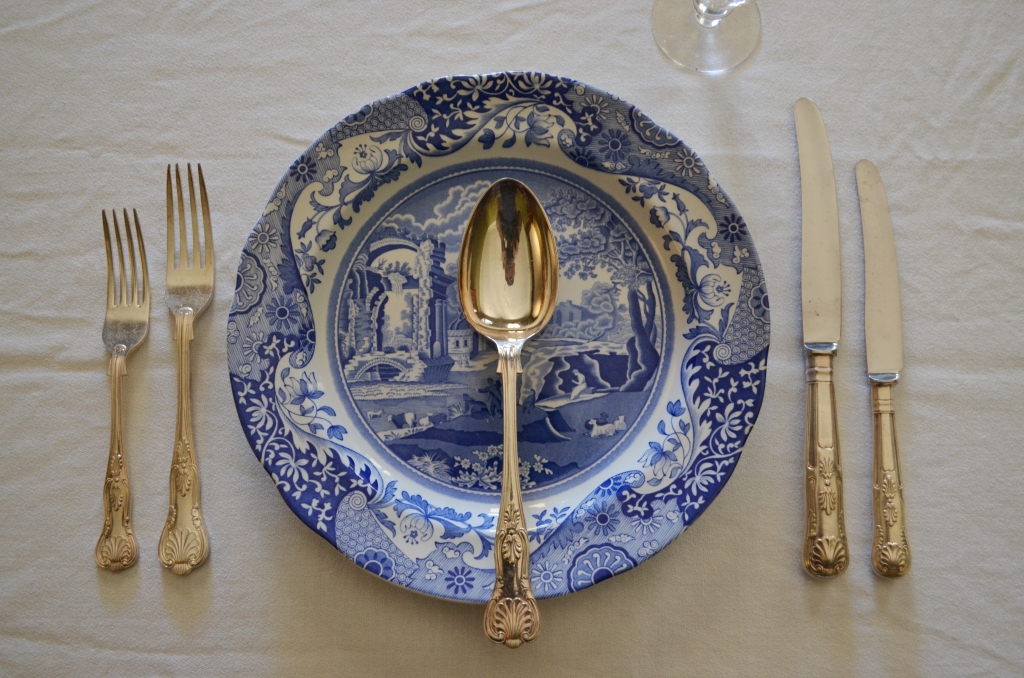
A formal table setting ready for the first and second courses. Photo Scott Hill © Sydney Living Museums
Conversation begins:
1. Fork placed over knife, pointing outwards, tines upwards: “I am interested [in you /what you have to say] and would engage you in conversation” (directed to the person on the diner’s right):
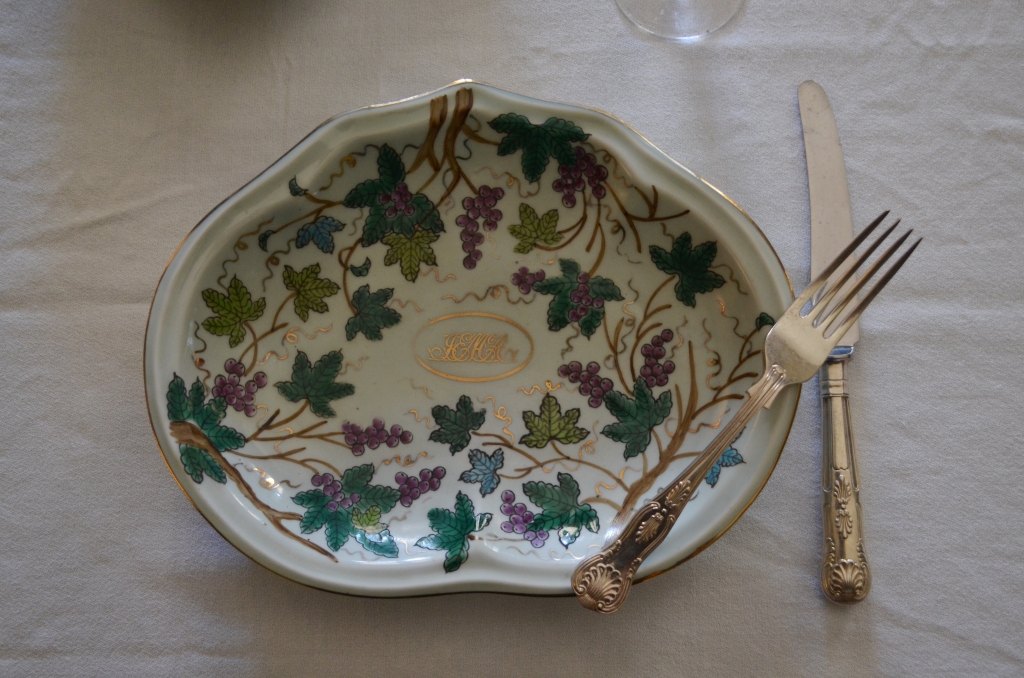
Example of Victorian table talk using dessert ware. Photo Scott Hill © Sydney Living Museums
2. Fork on top of knife pointing inwards, tines downwards: “I am interested in what you say but will not respond [i.e. ‘I will remain a passive part of the conversation’]. No doubt especially useful when seated next to a tedious retired major who went on ad-nauseum about their career in India (“don’t you know”). The occasional nod and smile was all that was needed to make it through to the next course, oblivious of what was being said, but you ran the risk of unwittingly agreeing to spend a week at his estate:
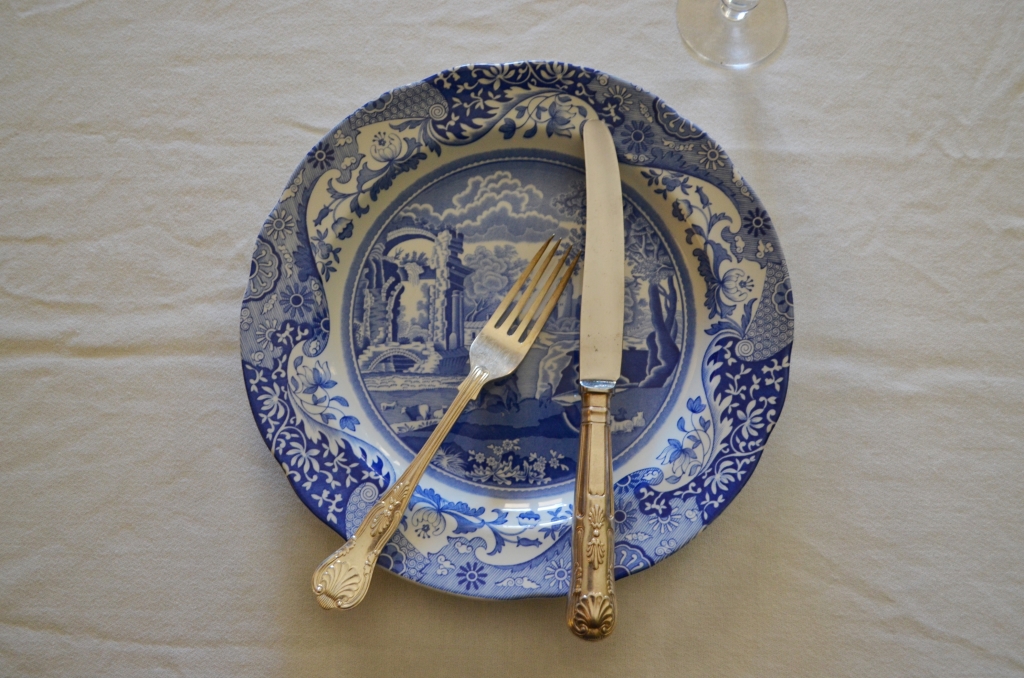
Example of Victorian table talk. Photo Scott Hill © Sydney Living Museums
3.“Please rescue me from the unwanted attentions of the diner on my [right or left, depending on the angle of the knife]”. This varied however as the use of a broad-bladed fish knife – rather than the larger table knife – insinuated an interest. Confusion could reign in the first course:

Example of Victorian table talk. Photo Scott Hill © Sydney Living Museums
4. “I do not wish to engage in conversation” (one for the dining recluse). Note the tines are positioned at the base of the blade, making this a general statement not directed at any one particular person:
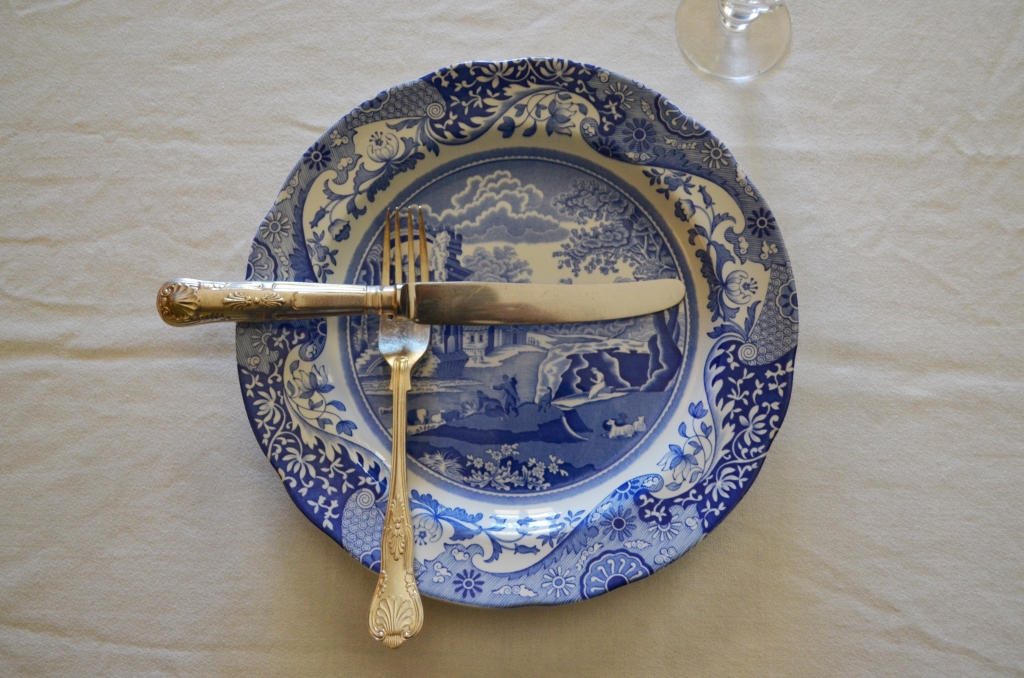
Example of Victorian table talk. Photo Scott Hill © Sydney Living Museums
5. In contrast, this position was a call for assistance: “Please assist me in extricating myself [form conversation with / the attentions of], the person opposite“:
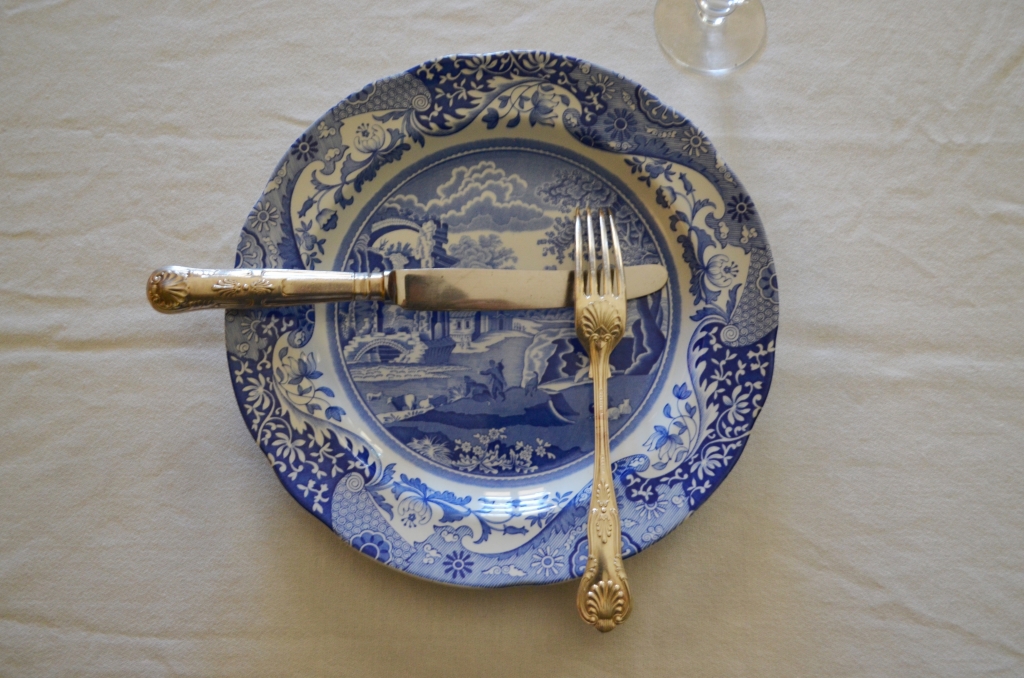
Example of Victorian table talk. Photo Scott Hill © Sydney Living Museums
6. A variation on arrangement no. 1, the fork placed with tines upwards on the side of the plate closest to the message’s recipient: “I am interested in you” (though this arrangement suggested more than a ‘conversational’ interest). The receiver would then respond with their fork placed up (assent) or downwards (politely decline):

Example of Victorian table talk. Photo Scott Hill © Sydney Living Museums
7. None too subtle and akin to being ‘cut’ socially, a knife placed on the side of the plate, the blade towards the recipient: “Please do not attempt to engage me in conversation”:
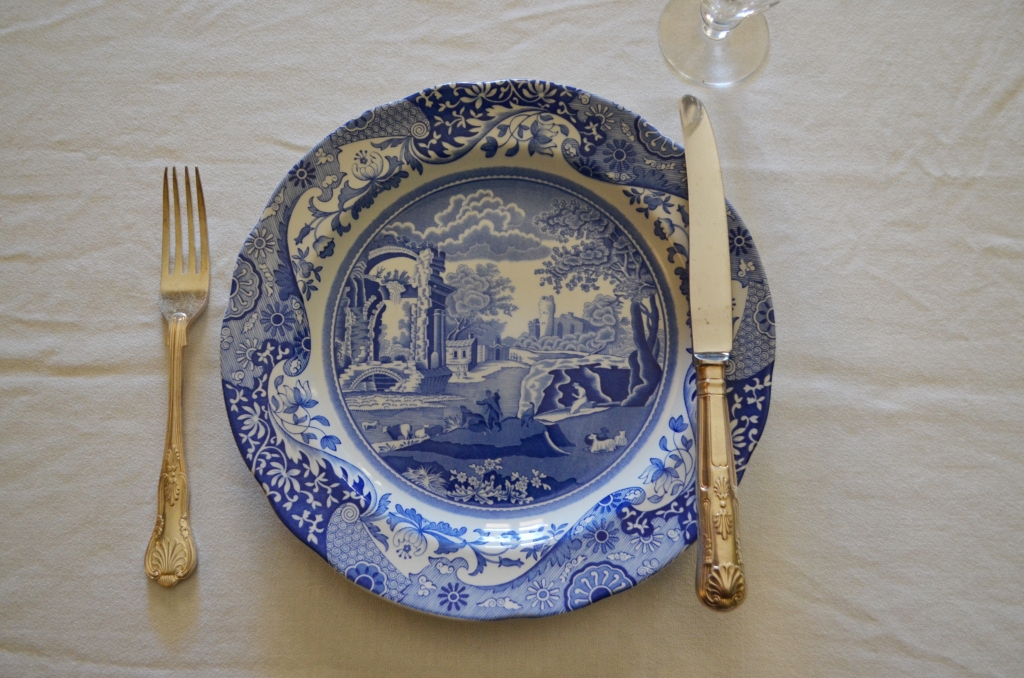
Examples of Victorian table talk. Photo Scott Hill © Sydney Living Museums
8. You can probably guess this one as well, crossed cutlery,the knife placed over the tines: “I wish to end this conversation/topic“. This didn’t necessarily mean the end of a entire conversation, as the tines point upwards. Perhaps the topic was simply becoming indelicate or uncomfortably opinionated. Today most would recognise it as meaning something quite different: “I have not finished my meal, do not take away my plate”:
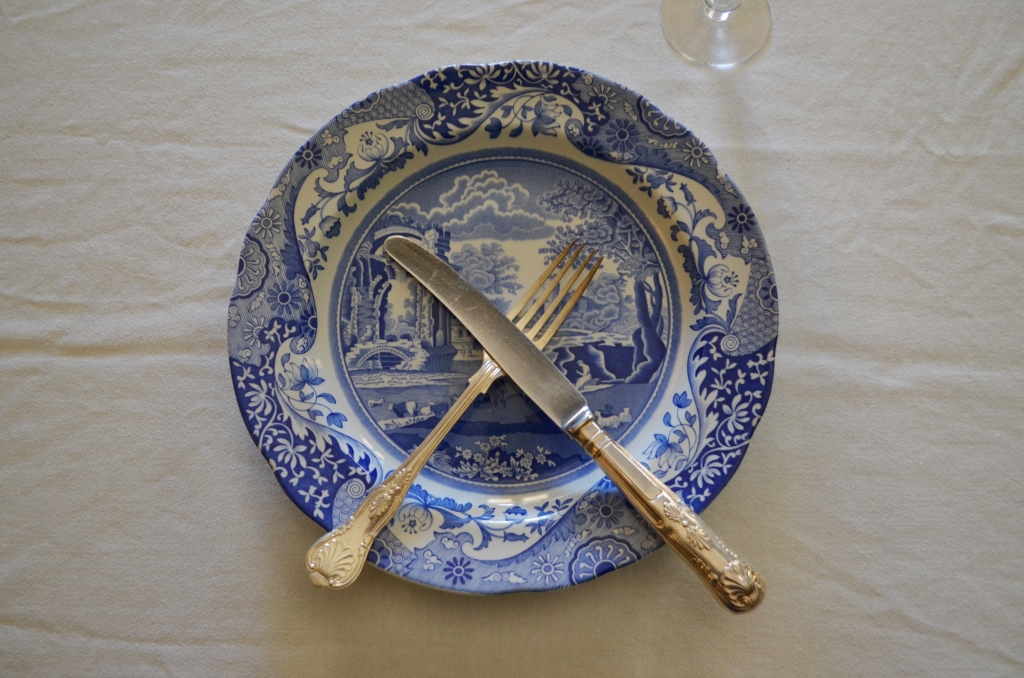
Example of Victorian table talk. Photo Scott Hill © Sydney Living Museums
9. With the cutlery reversed but parallel, blade inwards and the tines downwards, “I am confused by the conversation”:

Examples of Victorian table talk. Photo Scott Hill © Sydney Living Museums
10. This arrangement is similar, but relates to the dish itself. Cutlery akimbo [angled] in reversed order [more difficult with a left handed diner as is prone to confusion]: “I am unfamiliar with this dish / ingredient – can you inform me?”A particularly useful position for those traveling abroad who did not recognise a meat / bird / vegetable / fruit, or just making a comment that the cook has made such a hash-up that the identity of a dish is masked and the hostess has not provided menu cards [or they are in French]:
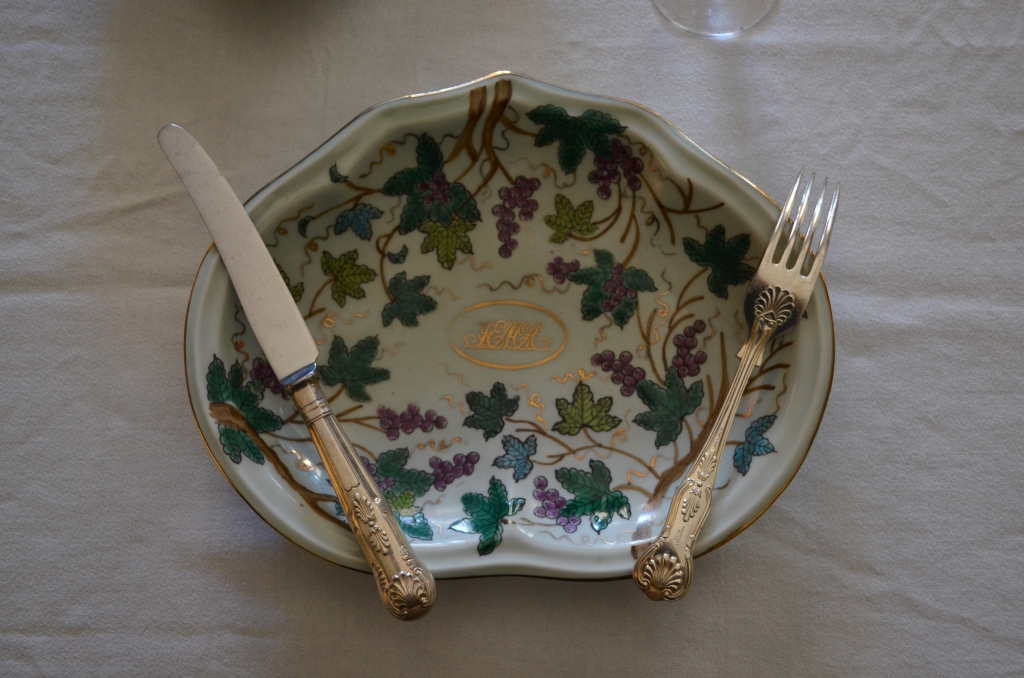
Example of Victorian table talk using dessert ware. Photo Scott Hill © Sydney Living Museums
11. The quick placement of a spoon or fork upside down whilst eating conveyed dissatisfaction, perhaps the soup was too highly seasoned (as here). If it was left upside down there was an actual issue, such as meat that was too old or undercooked:

Example of Victorian table talk. Photo Scott Hill © Sydney Living Museums
12. Some messages were quick gestures rather than ‘assemblages’. “I think the [butler / footman / maid] is sampling the wines” involved catching the eye of a fellow diner, and casually touching your knife to the stem of your glass.
13. And to end, a message that required a fork to be concealed (voluminous leg o’mutton sleeves were very useful for this) as the table was cleared then placed au solitaire on the cloth – “I would continue this conversation afterwards”. A useful ‘last chance’ message before the ladies withdrew after dinner.
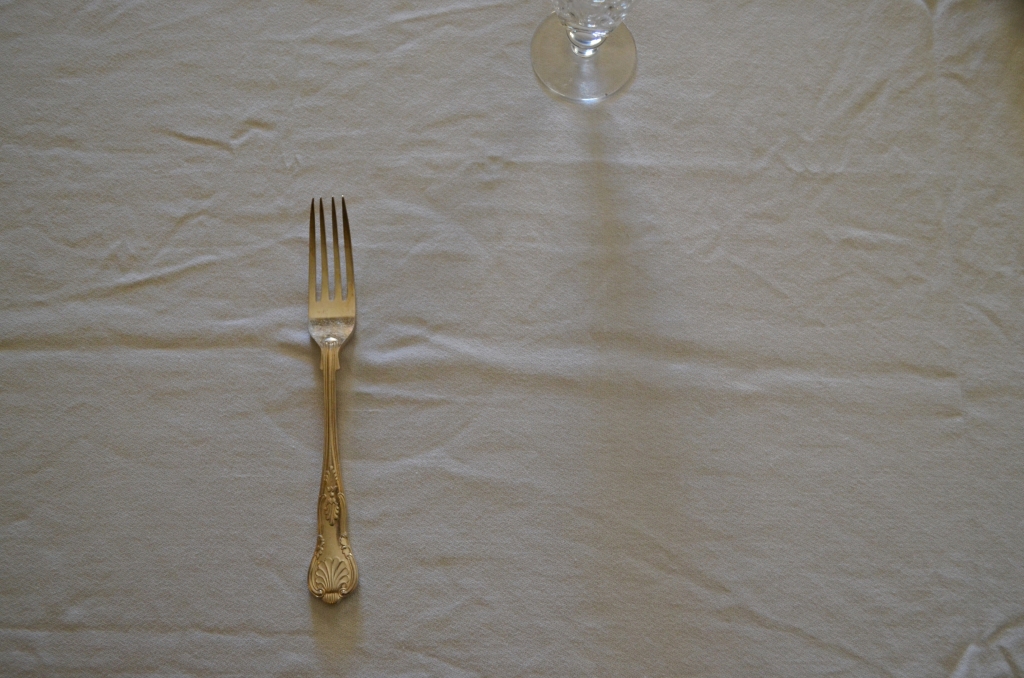
Example of Victorian table talk. Photo Scott Hill © Sydney Living Museums
Notes
[1] Practical instructions for Ladies by Mrs Loudon ~ Comprising all matters associated with the Drawing Room and requisites of the Table. London, John Murray, 1872 (4th edition).
[2] Timon of Athens by William Shakespeare, printed complete from the text of Sam[uel] Jonson and Geo[rge] Steevens. London, John Bell, 1787.
(April Fool!)
